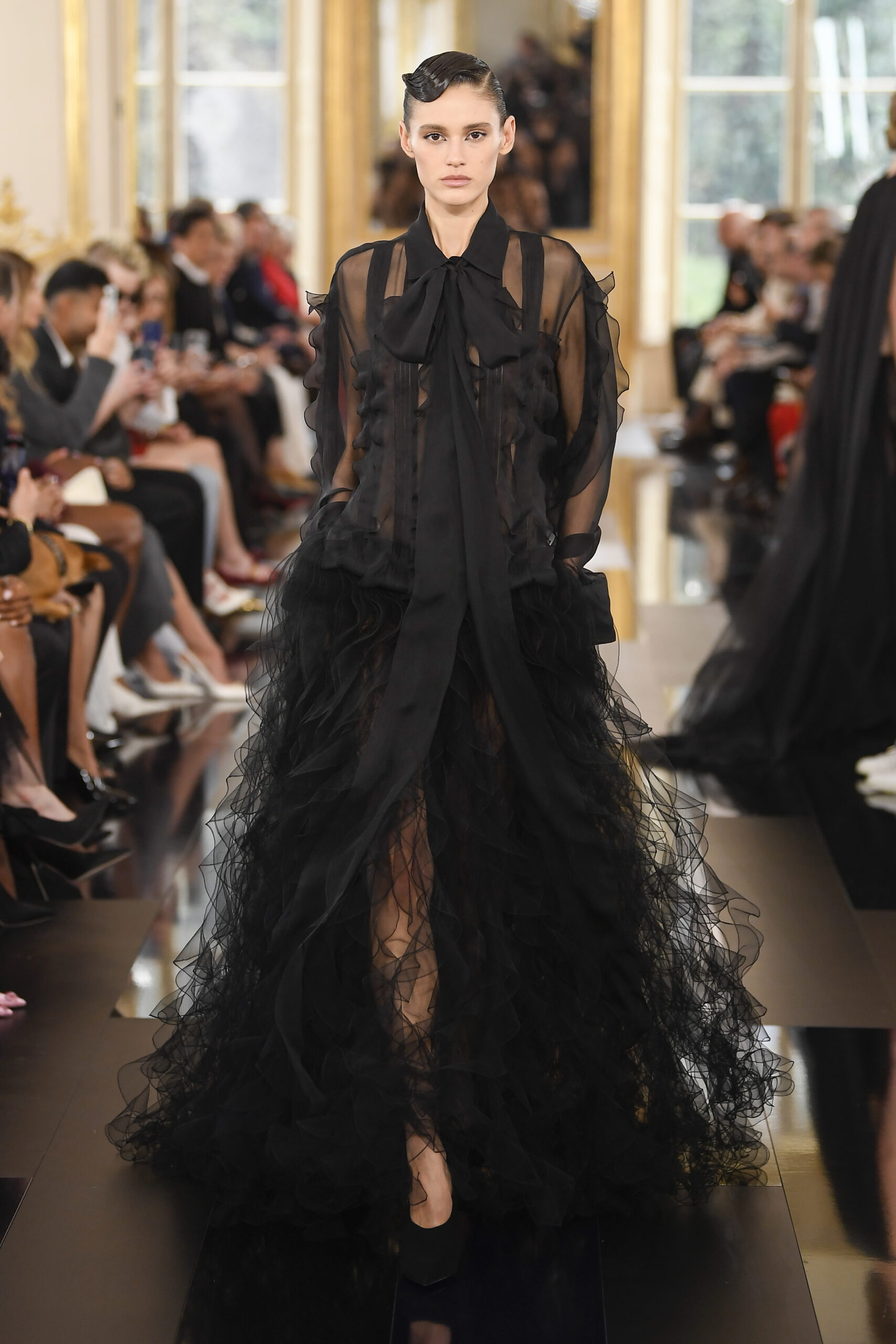
Black is rarely lauded for its nuances. Used as a canvas, a contrast, a background, it is rarely a talking point for its aesthetic curiosities. Yet, as Pierpaolo Piccioli explored for Valentino Fall/Winter ‘24, there is exceptional beauty and depth to be found when one looks close enough. Though the label is known for its potent shade of ‘Rosso Valentino’ and its feminine palettes, today’s study in black did not delineate the architecture of its ethereal style, but rather extended a dark side into ‘Valentino Le Noir’.
Backstage Piccioli explained his interest in creating a beguiling introspection of a single colour. “From the black I seek light, in black I refine my sight. I approached black as a canvas, a starting point on which to build layers and structures, silhouettes that could move while looking for the lights around, to soak them in and reflect them.” By steering his focus into the peacefulness of monochrome, the result is a surprisingly angelical collection. Using texture through fabrication, the pieces curated a romance of contrast and variation despite any colourway limitation. In fact, the lack of colour became almost irrelevant as Piccioli bent light and shade to create visual effects and distinction. Designing with plissé crêpe, velvet, tulle and layers of feathers, ‘black’ instead became angles and shades, depths and contrasts, lights and darks.

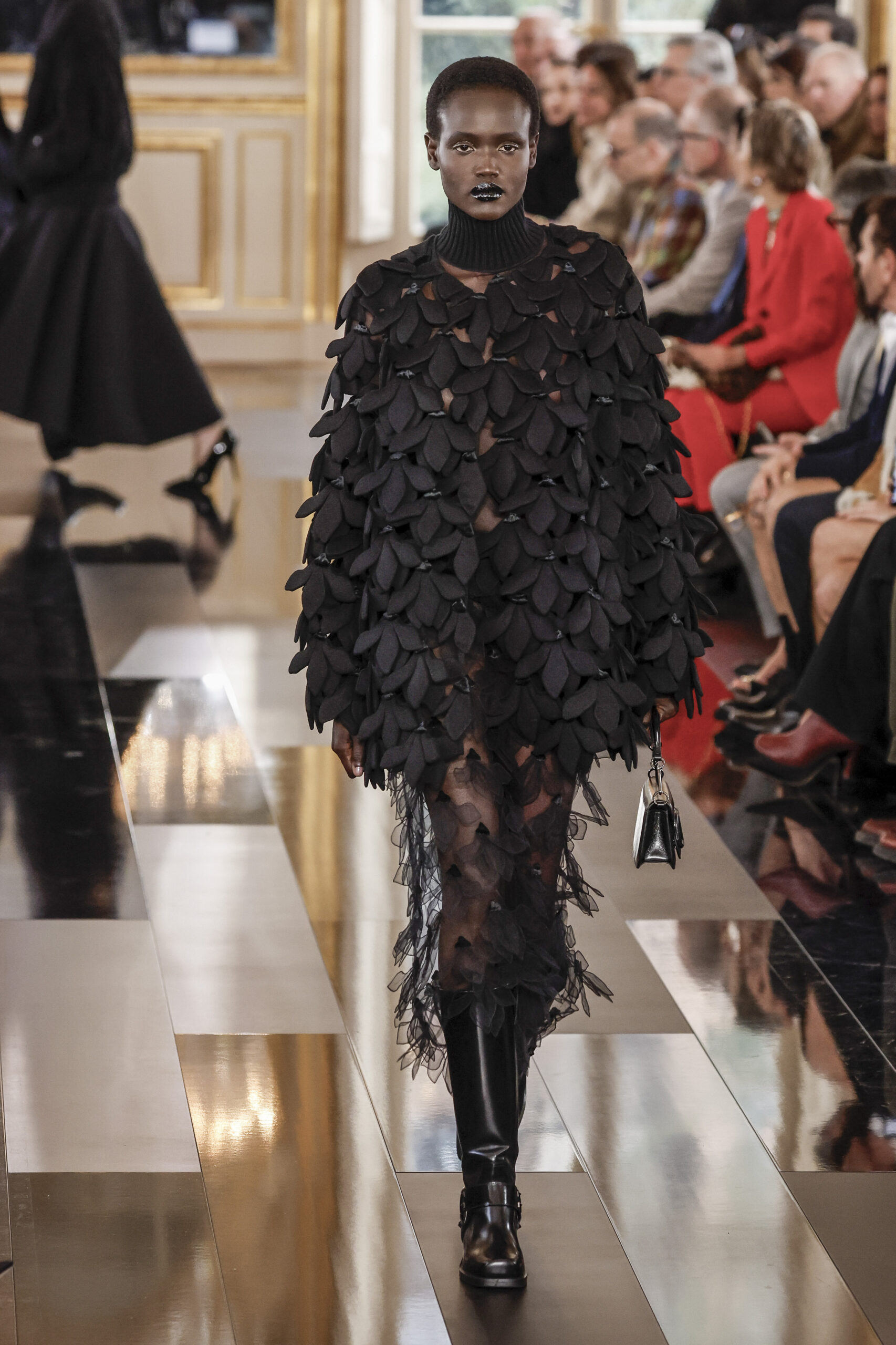
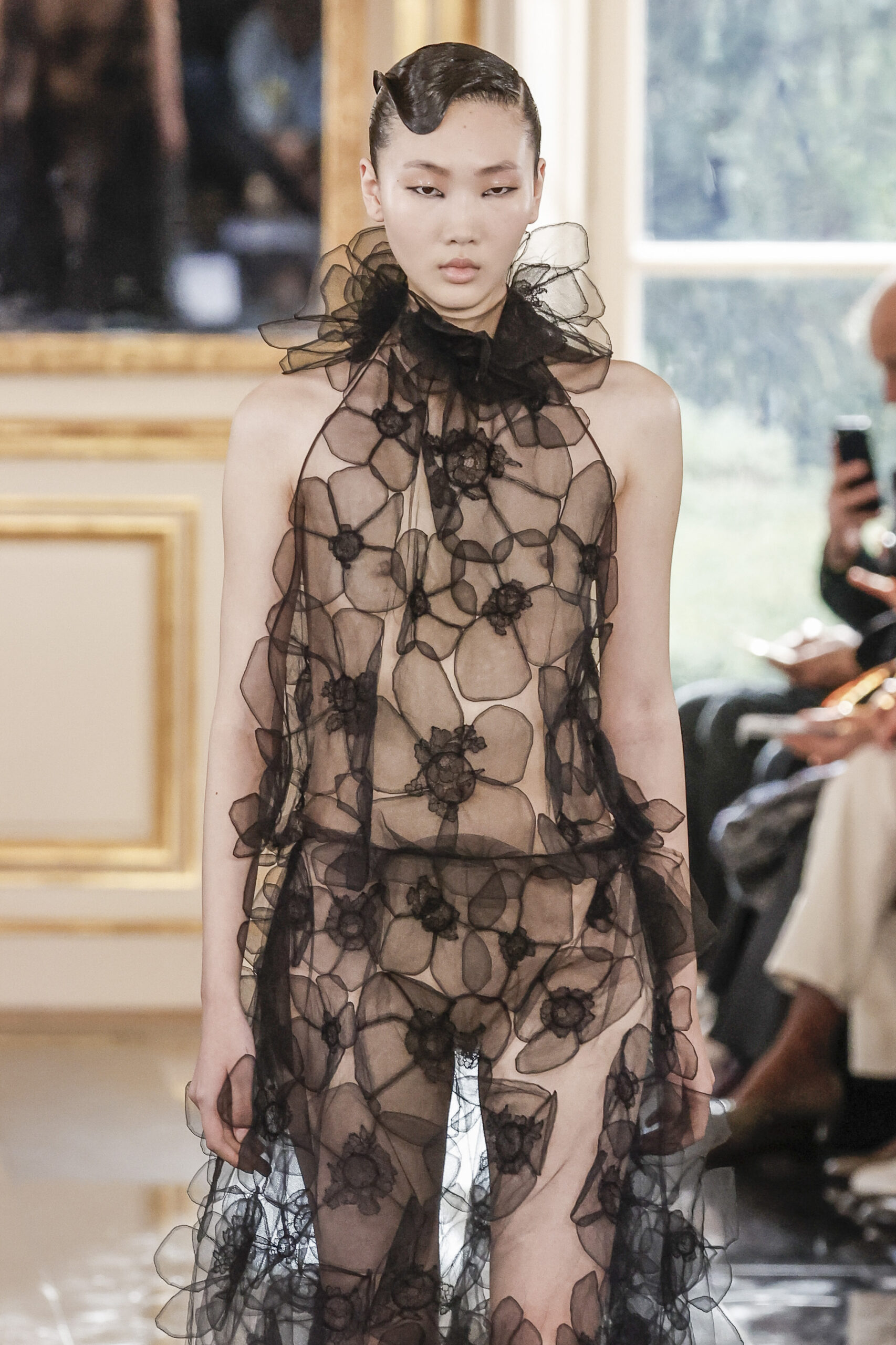
He was inspired by the works of contemporary artists Mark Rothko and Pierre Soulages, as well as father of modern sculpture Constantin Brâncusi, in their recalibration of monochromatic colour. Soulages especially, using the bleeding of dark shades in works of linear cross-hatching, and his consistent choice of black, in a style he named ‘Outrenoir’.
From the basis of these technicalities, design has the power to manipulate both the solemnity and the formidable façade of black’s possibilities. However, for this collection Piccioli wanted the colour to “not be of sobriety but of exuberance” and so silhouettes were executed in an Eighties geometry, in addition to his more expected cascading femininity. Laser-cut lace returned from last season, this time not in white but, of course, in black, while sheer blouses and chiffon sheaths delivered warmth from the hinting of skin beneath. Accessories contrasted in shiny patents for boots, pumps and contoured handbags while glossy fringing and hand-cut organza flowers floated and fell, changing with every sprinkle of light that hit them.
Perhaps it seems contrite to consider there to be deep sophistication asscociated with a simple, achromatic colour, but, when left to stand alone, it scales into ardent possibility. Black is the first colour humans recognise when they’re born, its power coming from its ability to absorb light. It’s disruptive, captivating and enticing. It’s also extremely popular. And, as Piccioli determined today it can refract and reflect and evoke emotion more than any colour of the rainbow.
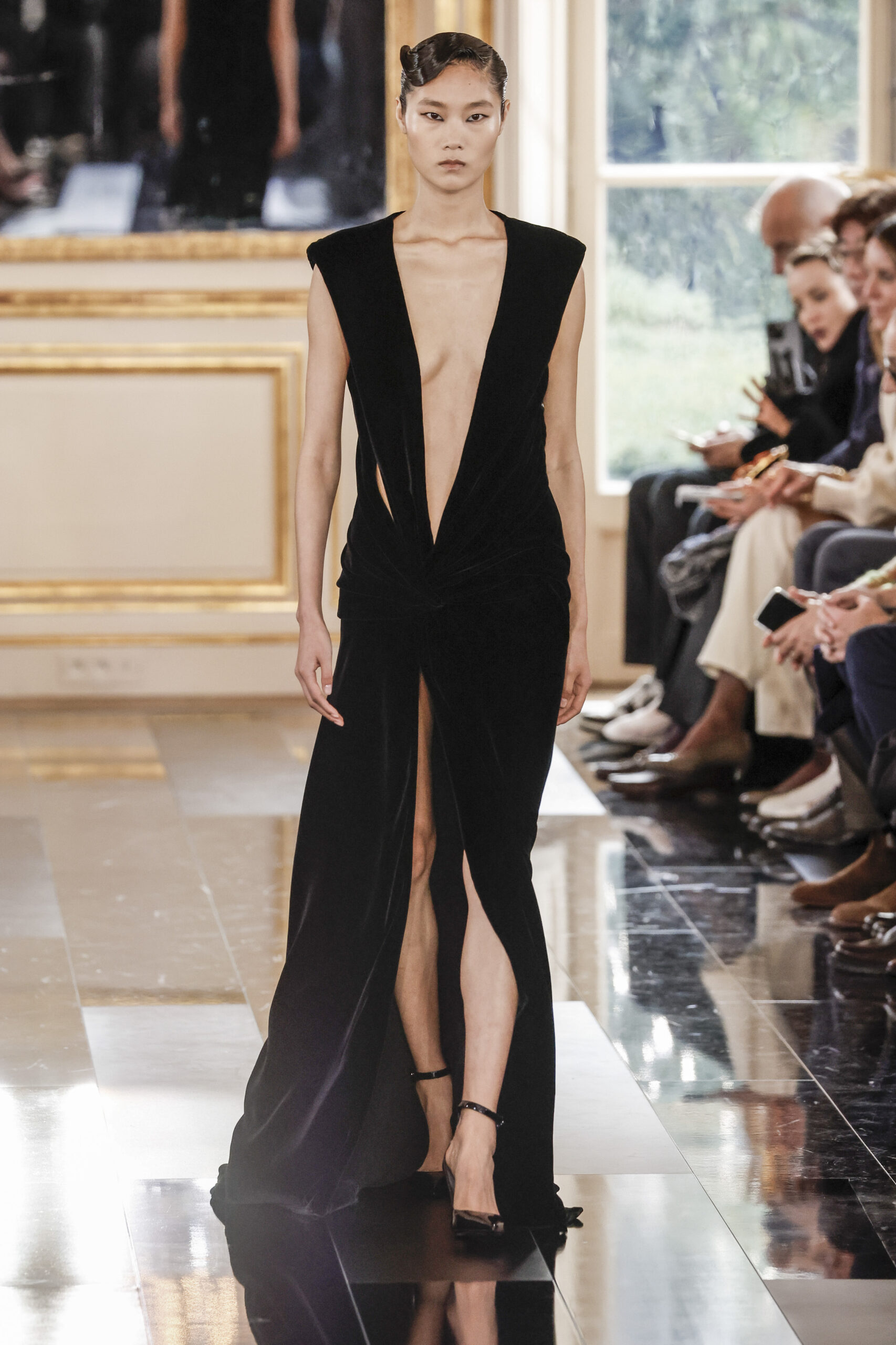
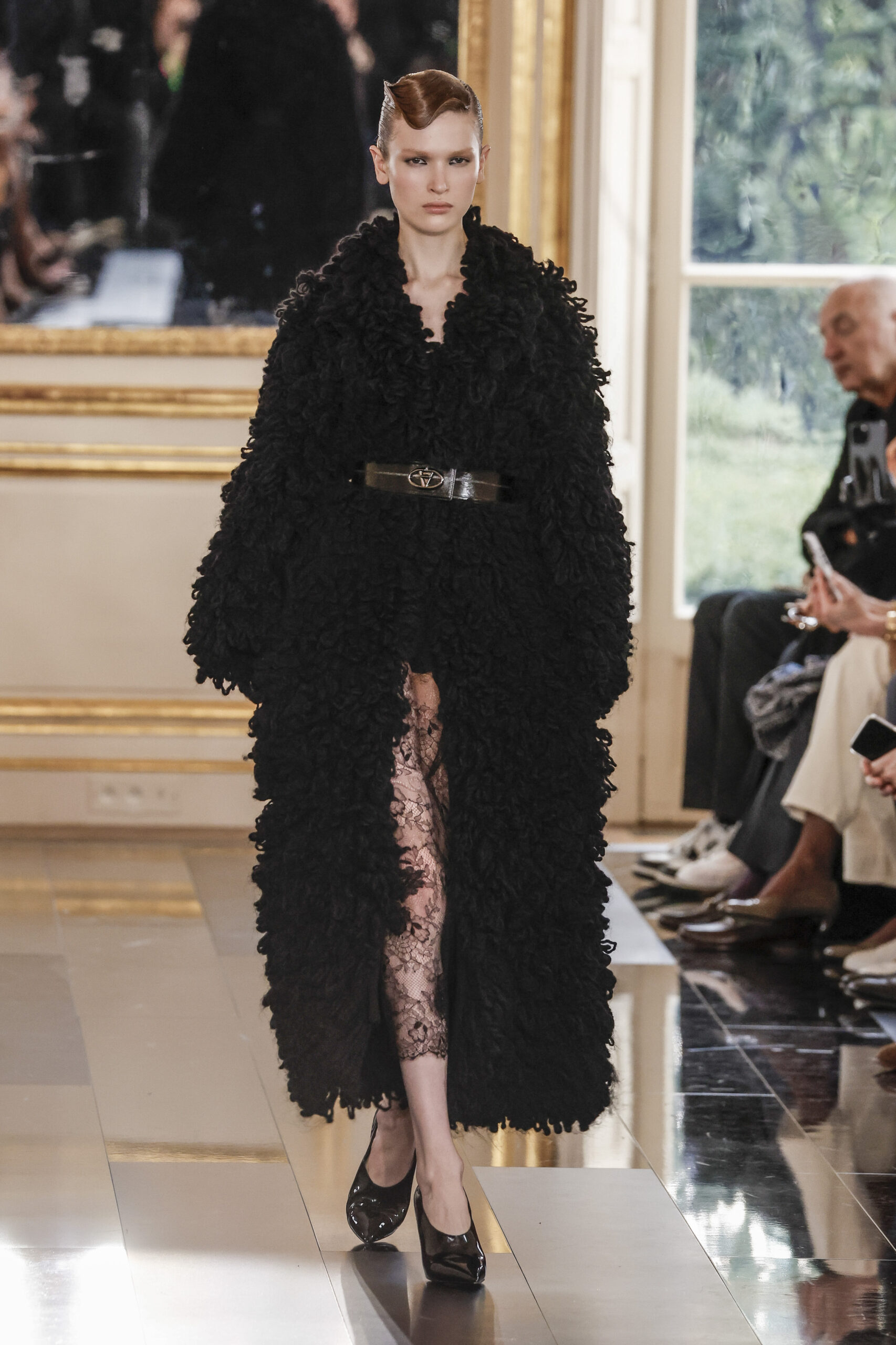


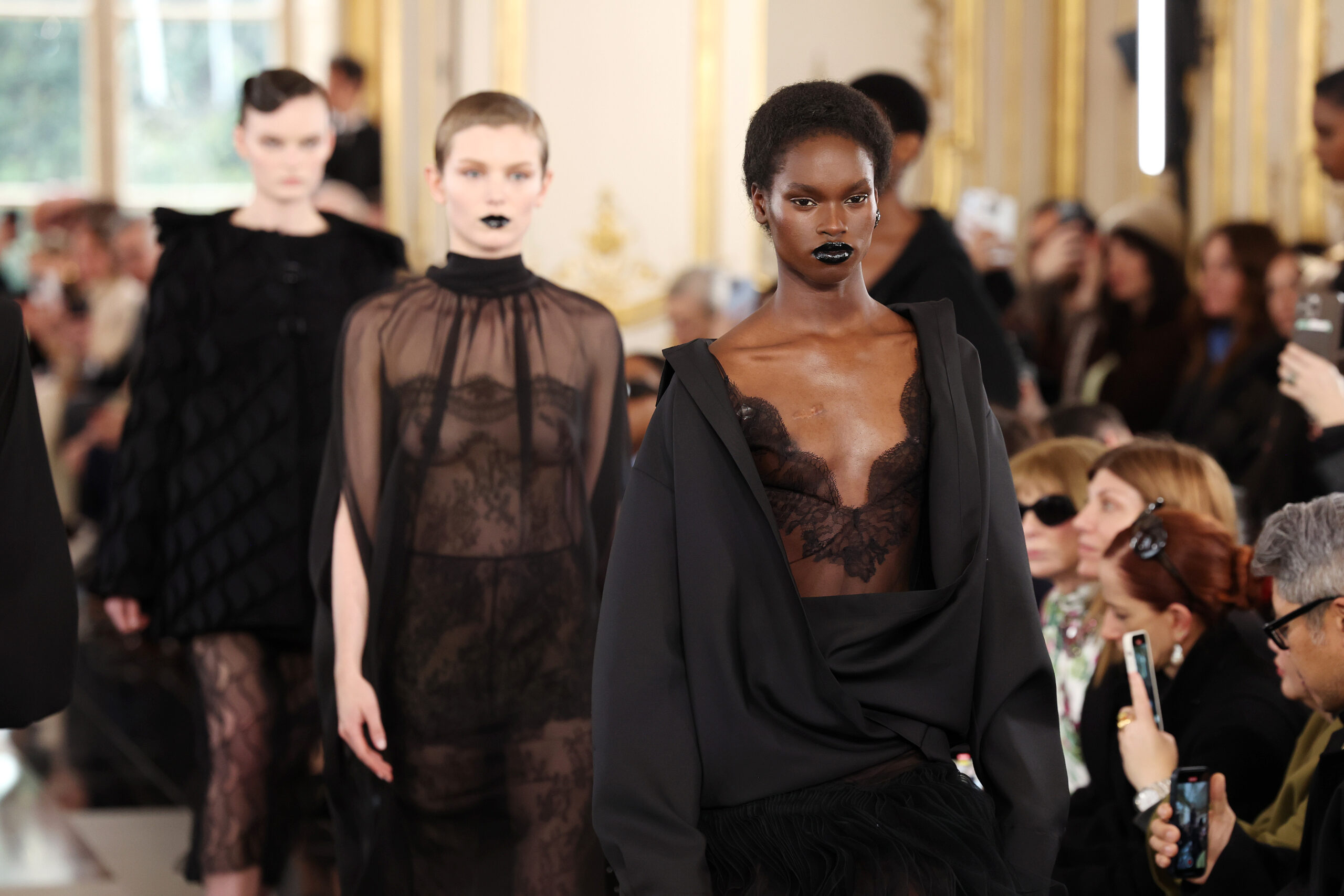
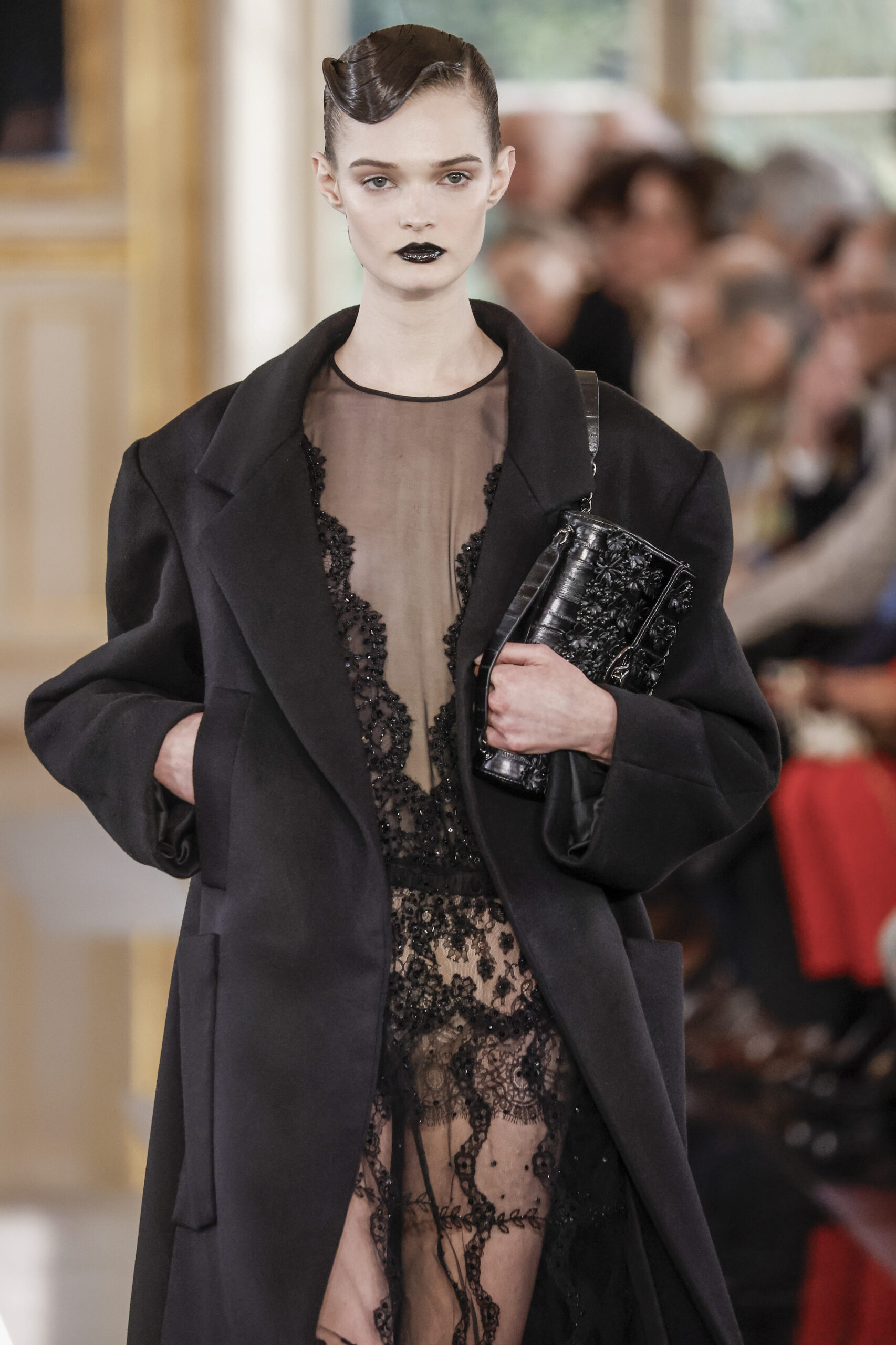
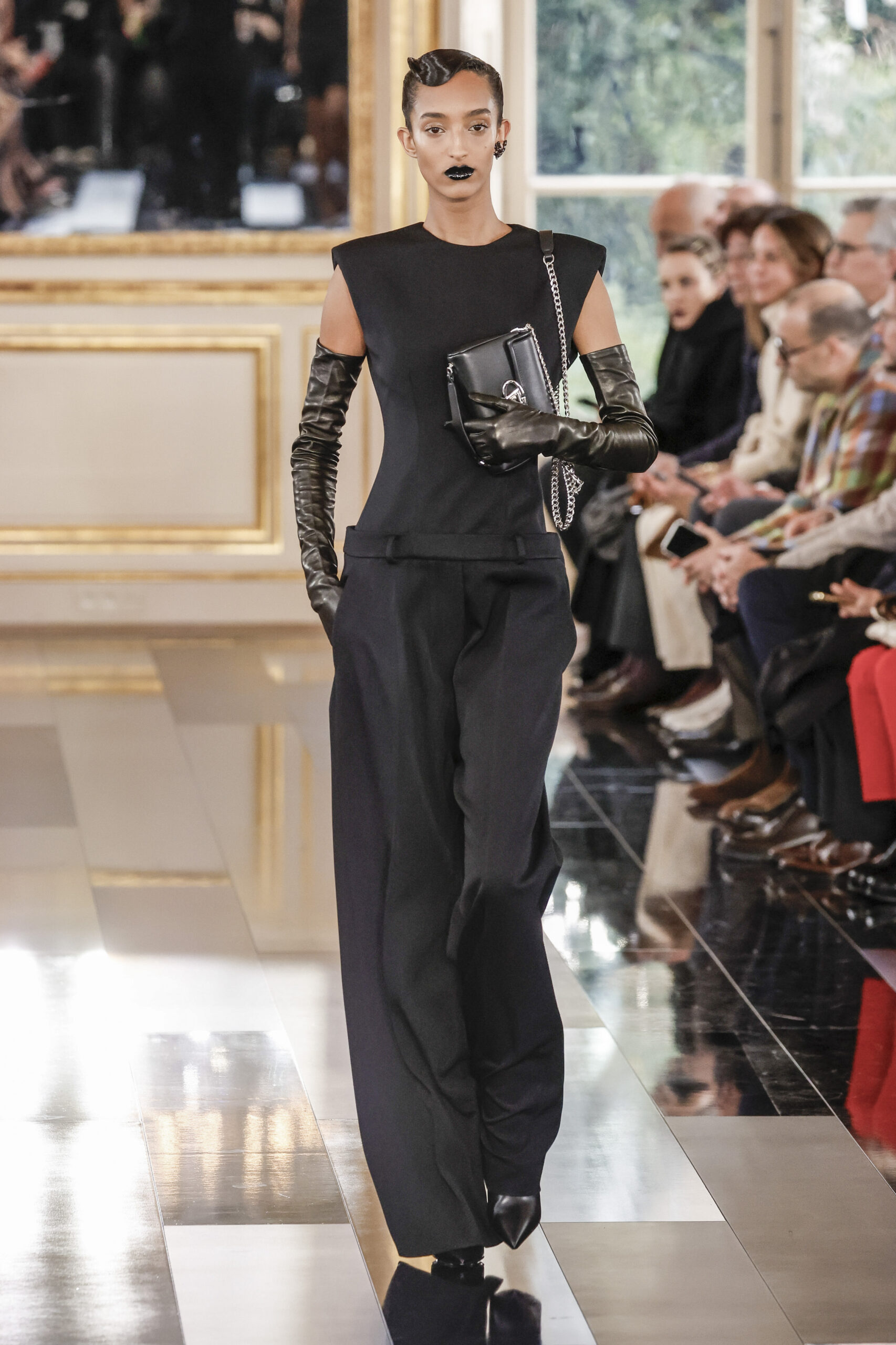
This story first appeared on GRAZIA International.
